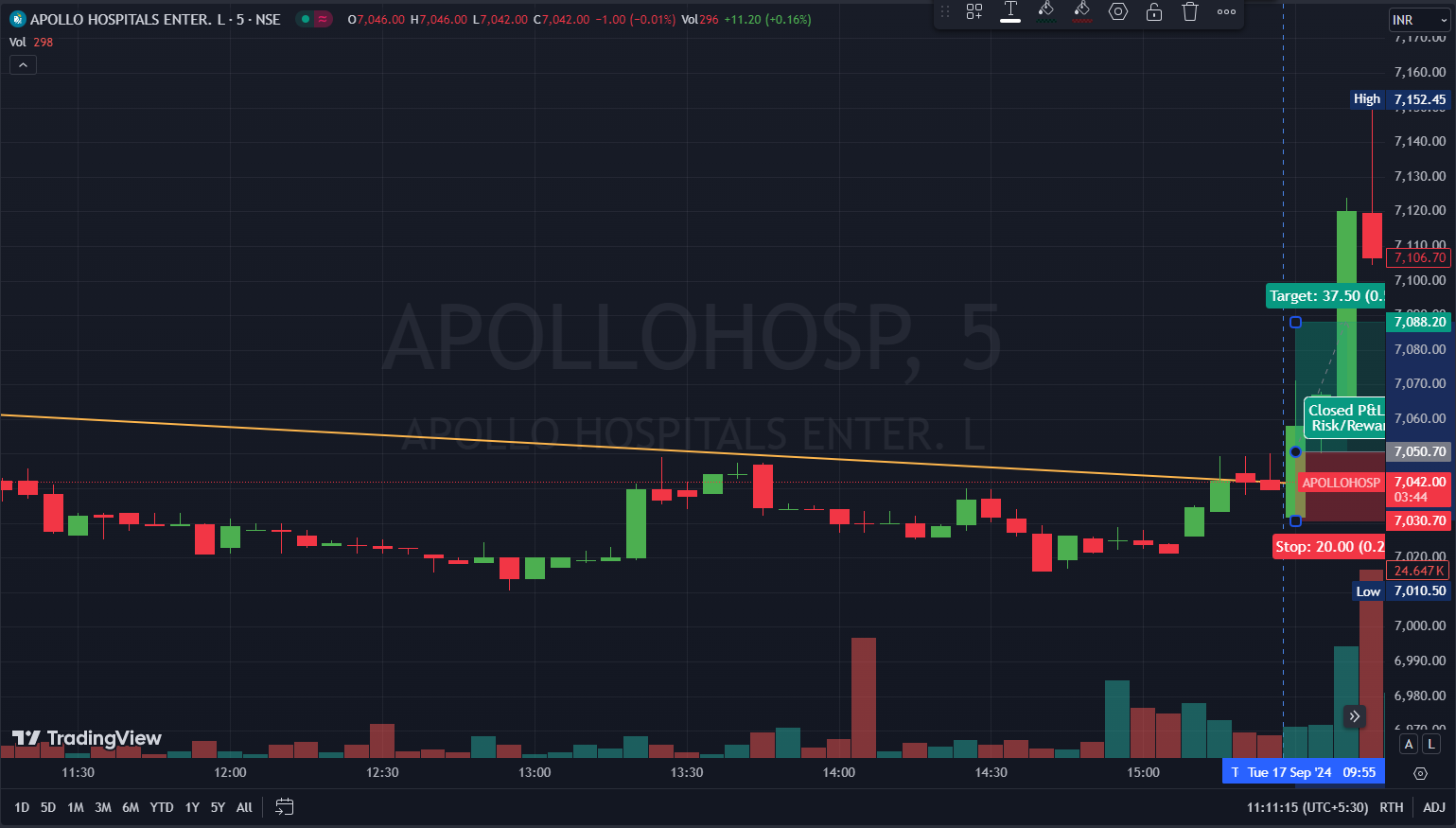
Apollohosp 7100 CE Recommended above 107, Sl 91, Trgt 125-137
Apollo Hospitals, a leading player in healthcare services, reported an impressive 83 percent rise in consolidated net profit, reaching ₹305 crore for the first quarter of FY2024-2025. This marks a significant increase from the ₹167 crore net profit reported in the same period last year. The company’s revenue from operations grew by 15 percent, climbing to ₹5,086 crore from ₹4,418 crore in the previous fiscal. Additionally, Apollo Hospitals’ consolidated EBITDA for Q1 FY25 surged 33 percent year-on-year, reaching ₹675 crore. The stock has also performed well, gaining nearly 32 percent over the last year and 17% in 2024 YTD.
Analysis
The Indian healthcare sector is expected to reach US$ 372 billion by 2022, driven by rising incomes, greater health awareness, lifestyle diseases, and increasing access to insurance. Healthcare has become one of India’s largest sectors – both in terms of revenue and employment.
Healthcare comprises hospitals, medical devices, clinical trials, outsourcing, telemedicine, medical tourism, health insurance, and medical equipment. The structure of the healthcare delivery system in India consists of three broad segments: Primary care, Secondary care, and Tertiary care.
- Primary care is the first point of contact between the population and the healthcare service providers. For example, Sub-center (SC), Primary Health Centre (PHC), and Community Health Centre (CHC) which is more relevant to rural areas (PHC’s).
- Secondary care provides inpatient as well as outpatient medical services and includes simple surgical procedures. For example, District level & Mid-sized hospitals.
- Tertiary care is the third level of the healthcare delivery system in the country. These hospitals have specialized consultative healthcare infrastructure. For example, Single-specialty and Multi-specialty hospitals.
While healthcare services are offered by the public as well as private sectors, in urban as well as rural areas, generally people prefer private hospitals over public hospitals for the treatment of diseases, illness, and sickness. So, let’s look into Apollo Hospital Ent. and its performance over the period.
- Operating cash flow ratio: It measures the adequacy of a company’s cash generated from operating activities to pay off short-term financial obligations. Apollo Hospital Ent. cash from the operating activity was Rs 1,191.40
- Financial Strength: Healthcare organizations usually have high debt loads and low equity capital on their balance sheet. So, the Debt to Equity ratio is important to analyze the company’s sustainability. Apollo Hospital Ent. has a debt-to-equity ratio of 0.25, which is a strong indication for the company.
- EPS growth: Investors should ensure the EPS figure is growing faster than revenue numbers because it indicates company management is increasing the efficiency with which it runs the company. In Apollo Hospital Ent. , the EPS growth was -6.85 % which is bad for the company.
- Operating profit margin: It determines a company’s potential earnings. It assesses how well-managed a company concerning its basic overhead costs and other operating expenses, Apollo Hospital Ent. has an OPM of 24.71 % which is a good sign for profitability.
- ROE: Apollo Hospital Ent. has an average ROE of 13.81 %. ROE is an important financial parameter for hospitals & health care companies because they expand and grow rapidly. Therefore, ROE measures how efficiently a shareholder’s fund is used for generating profits.
The stock surpassed its descending trendline in the opening candle. Hence recommended for further momentum.


